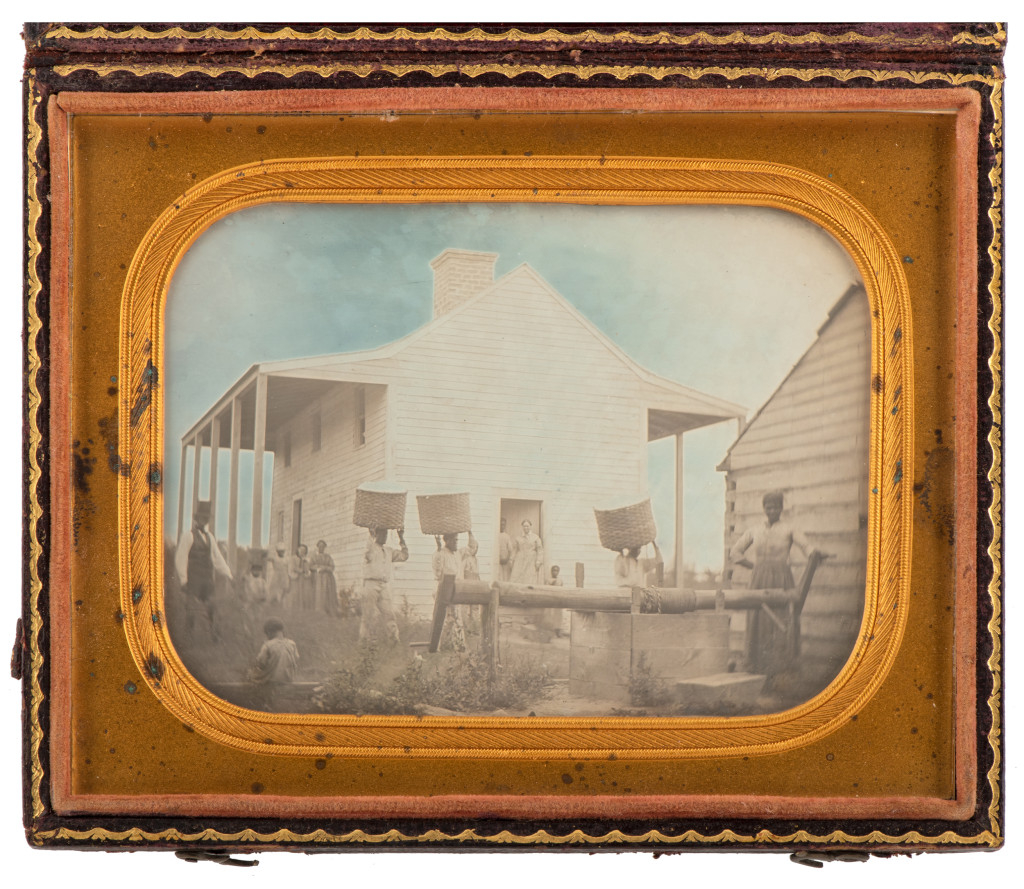CINCINNATI, OHIO – A rare antebellum quarter plate daguerreotype believed to be the earliest known image of enslaved African Americans with cotton ever taken sold for $324,500 in Cowan’s auction, American History, Including Treasures of the Civil War, on November 15. The photograph, likely taken some time in the 1850s, depicts a smaller Georgia plantation, making it all the more unusual as most of the images of enslaved African Americans were taken at large coastal plantations.
“We were privileged to sell this historic record of antebellum American history,” said Wes Cowan, Cowan’s vice chair and principal auctioneer. “Clearly, this was one of the most important lots of photography we’ve ever sold, and as the leading auction house for early photography in the world, I don’t say that lightly.”
The daguerreotype was purchased by the Hall Family Foundation on behalf of the Nelson-Atkins Museum of Missouri. The lot opened with an absentee bid at the starting price of $50,000 before the Hall Family Foundation and two other phone bidders took over the action. After several minutes of back-and-forth bidding, the foundation emerged as the winning bidder when the hammer fell at $260,000. The inclusion of a 25 percent buyer’s premium resulted in a final sales price of $324,500. The photograph had been estimated to sell for $100/150,000.
“Our staff did a great job of uncovering the historic background of the scene to further add context to this incredible piece of history,” said Cowan. “Although we weren’t able to identify the photographer, whoever he was, was a master of his craft. The care taken to set the scene is extraordinary and would have been well above and beyond the standards of the era.”
The daguerreotype is believed to depict the rural Greene County, Georgia plantation of Samuel T. Gentry (1798-1873). While other Gentrys lived in Georgia at the time this image was taken, federal slave schedules from 1850 and 1860 indicate a mere handful were slave holders, and only one — Samuel T. Gentry — owned at least 10 slaves, the number depicted in this daguerreotype.
It is probable that Gentry commissioned this photograph to document his prosperity. The photographer carefully posed the scene so that the family “wealth” is clearly on display: ten enslaved African Americans are visible in the picture, with several displaying baskets of cotton perched atop their heads. Cotton – the production of which was made possible by Gentry’s slaves – is an integral part of the tableau.
Watch for a full review of this sale in a future issue.





